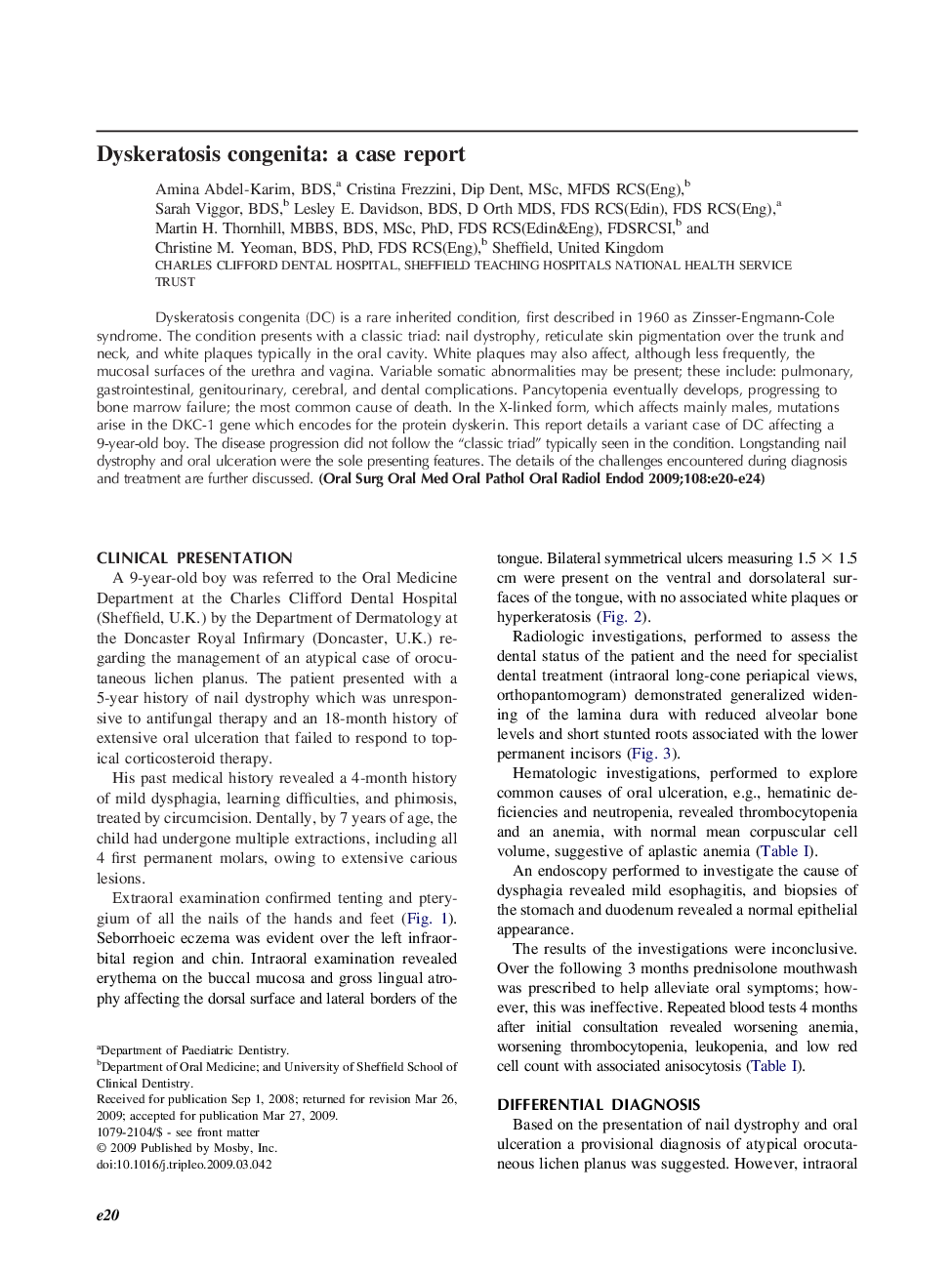| Article ID | Journal | Published Year | Pages | File Type |
|---|---|---|---|---|
| 3168145 | Oral Surgery, Oral Medicine, Oral Pathology, Oral Radiology, and Endodontology | 2009 | 5 Pages |
Dyskeratosis congenita (DC) is a rare inherited condition, first described in 1960 as Zinsser-Engmann-Cole syndrome. The condition presents with a classic triad: nail dystrophy, reticulate skin pigmentation over the trunk and neck, and white plaques typically in the oral cavity. White plaques may also affect, although less frequently, the mucosal surfaces of the urethra and vagina. Variable somatic abnormalities may be present; these include: pulmonary, gastrointestinal, genitourinary, cerebral, and dental complications. Pancytopenia eventually develops, progressing to bone marrow failure; the most common cause of death. In the X-linked form, which affects mainly males, mutations arise in the DKC-1 gene which encodes for the protein dyskerin. This report details a variant case of DC affecting a 9-year-old boy. The disease progression did not follow the “classic triad” typically seen in the condition. Longstanding nail dystrophy and oral ulceration were the sole presenting features. The details of the challenges encountered during diagnosis and treatment are further discussed.
